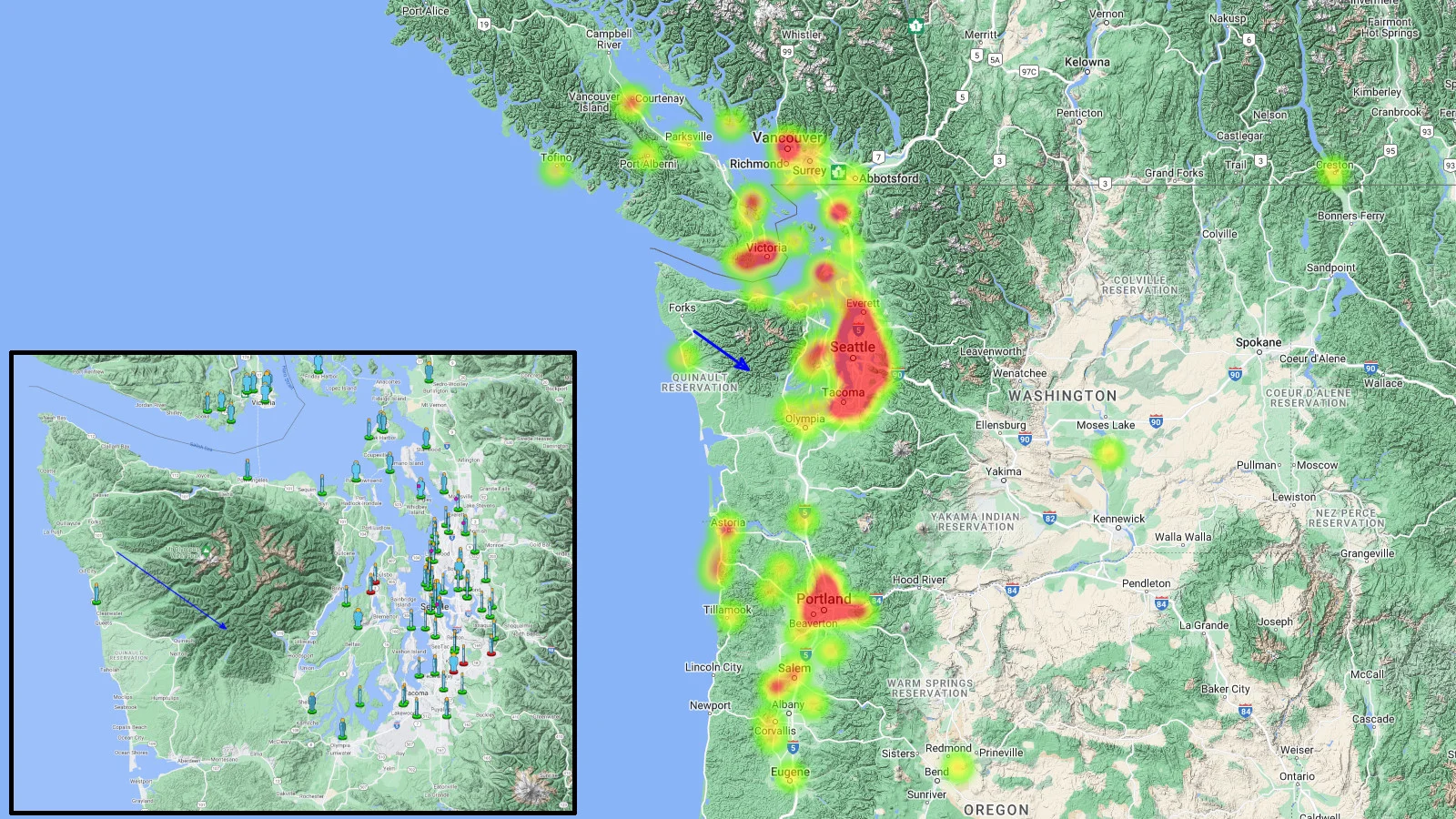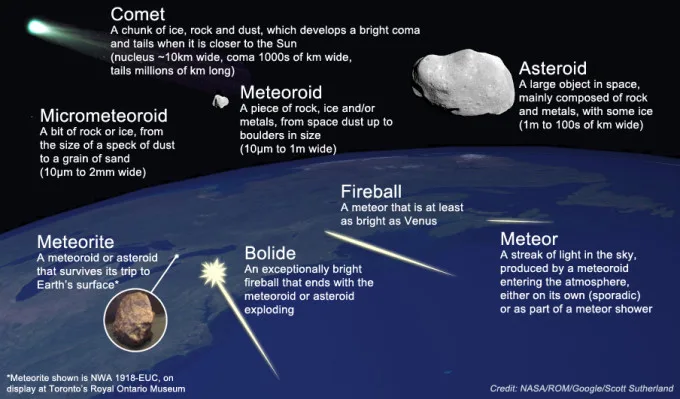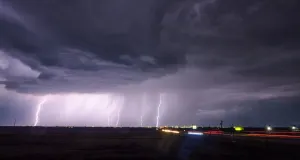
Bright meteor fireball blazed over the Pacific Northwest Wednesday night
Did you see it? This bright meteor was spotted from hundreds of kilometres around.
Dozens of witnesses spotted a bright meteor fireball blaze across the sky over the Pacific Northwest on Wednesday night.
At around 10:20 p.m. Pacific Time, witnesses from across Washington state, Oregon and southern British Columbia looked up to spy a meteor flash by overhead. As of Thursday afternoon, over 140 people have logged what they saw on the American Meteor Society website.

This fireball was captured at 10:17 p.m. PDT, October 12, 2022, by a front door camera in Marysville, Washington. Credit: Benjamin Souther
Based on those reports, this meteor appears to have plunged into the atmosphere over Mount Olympus, to the west of Seattle, WA.

This map shows the location and concentration of witnesses who reported Wednesday night's fireball to the American Meteor Society. The inset map, zoomed in over Seattle and Mount Washington, shows the path of the meteor, based on the eyewitness reports. Credit: AMS/Scott Sutherland
There are three separate meteor showers active in the night sky at this time of year — the Draconids, the Orionids, and the Taurids. However, based on the trajectory of this meteor, it was probably not a part of those meteor showers. Instead, it was likely a "sporadic" caused by a random space rock (aka meteoroid) getting in the way as Earth passed through this area of space on its orbit around the Sun.
WATCH: What's that in the sky? How to identify that flash of light you just saw
What's going on here?
When meteoroids — bits of rock and ice floating around in space — get swept up by Earth, they plunge into the upper atmosphere travelling at speeds of anywhere from 11 to 72 kilometres per second. At those speeds, these meteoroids compress the atoms and molecules in their path until that air glows, white hot. This glow is the flash of light we call a meteor. Sometimes, depending on what the meteoroid is made of, or what part of the atmosphere it flashes through, the meteor flash can also show up in different colours.
Typical meteors wink out in a fraction of a second. This is either because the meteoroid was vaporized or slowed down due to its interaction with the atmosphere.
Watch below: Perseid fireball captured on NASA camera
Fireballs result from slightly bigger meteoroids, perhaps the size of a pebble up to a baseball or basketball. These can shine so intensely as to rival the brightest objects in the sky and can be seen from hundreds of kilometres away.
Occasionally, a slightly larger meteoroid will plunge into the atmosphere, lighting up the sky as if it were daytime and exploding in an even brighter flash. While these are also typically called fireballs, they also go by the name bolide.

Did you see Wednesday night's fireball? If so, report it to the American Meteor Society.










